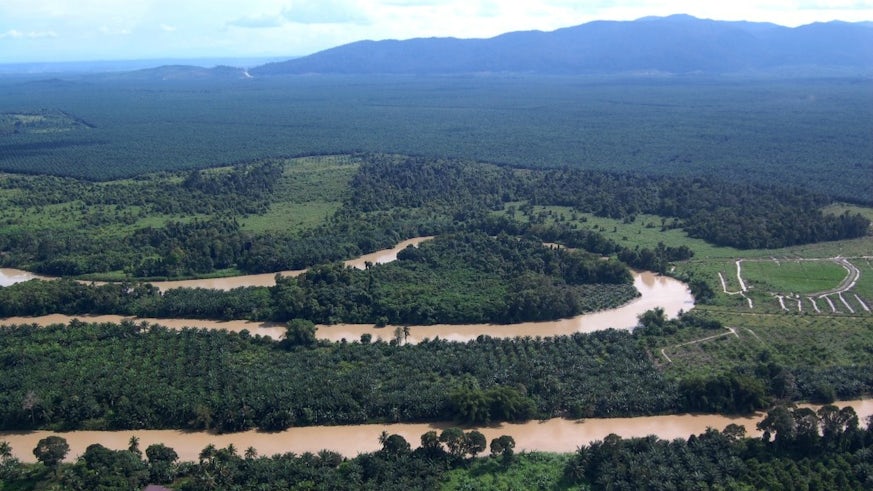Riparian forest buffers increase yields from oil palm plantations
30 August 2018

Researchers from Cardiff University’s Sustainable Places Research Institute, School of Biosciences and School of Earth and Environmental Sciences and Danau Girang Field Centre have found that preserving tropical forest buffers along the margins of large meandering rivers can enhance the profitability of floodplain plantations.
The paper, published in the journal Earth’s Future, was authored by Dr Alexander Horton, Dr Benoit Goossens, Professor Mike Bruford, and Dr Tristram Hales.
“Preserving tropical forest buffers along the margins of large meandering rivers can enhance the profitability of floodplain plantations while maintaining conservation benefits by reducing the area of land lost to the river through bank erosion,” said Dr Alexander Horton, first author of the paper.
“The increase is most evident in long-term economic projections [but] also holds true at shorter time scales, given the lagged productivity of newly established plantations. By reducing initial planting expenditure and safeguarding young palms from being lost to erosion before they generate revenue, riparian buffers have the potential to increase the short-term profitability of newly established plantations.”
Dr Benoit Goossens said: “We have found that riparian buffers of an order of tens of meters may enhance the long-term viability of floodplain plantations. This means that accounting for geomorphic contributions to ecosystem services may help align palm oil industry goals with environmental conservation.
“We strongly suggest that oil palm plantations set aside riparian forest buffers of at least 100 meters wide along large rivers such as Kinabatangan, Segama, Paitan, Sugut, Kalumpang, Serudong and Silabukan; and we hope that the results of this research will be considered by RSPO and oil palm companies in Sabah and in the rest of the world.”
The full paper can be viewed online.

